In this post, we will learn about the process of installing Bluebeam Using Intune. In this step-by-step guide, we will use the MSI version of the application to deploy Bluebeam on the targeted groups of Windows 10/11 devices.
Bluebeam is a software solution that provides tools for creating, editing, and collaborating on PDF documents. It is widely used in the construction industry, but it can be used in any industry where there is a need to share and collaborate on digital documents.
Bluebeam offers a range of features that make it easy to work with PDFs, including the ability to markup and annotate documents, compare different document versions, and organize documents into sets. It also includes advanced tools for measurement and estimation, which can help streamline workflows and reduce errors.
Through Bluebeam, engineers can gain actionable insights and standardize communications across projects. Bluebeam’s purpose-built markup and collaboration tools help architects speed up design reviews. With Bluebeam Revu, you can manage, control, and edit PDF files.
A better PDF editor is Bluebeam, which is more advanced and better suited to engineering and construction. It has far more tools and capabilities for collaborative viewing, marking up, and sharing of documents.
Deploy Bluebeam Using Intune
Follow the steps below to upload the MSI file for deploying Bluebeam using Intune. To start with the Intune line-of-business app package creation, keep the downloaded Bluebeam Revu x64 20.msi setup installation file in the appropriate location.
One can easily download the 64-bit application directly from Bluebeam. There are different setups for different environments. One can easily differentiate and choose the right setup for the Windows 64-bit architecture.
- Sign in to the Microsoft Intune admin center https://endpoint.microsoft.com/
- Here you have two options to jump into the Application creation. Select Apps > All apps > Add, or navigate to Apps > Windows > Windows Apps.
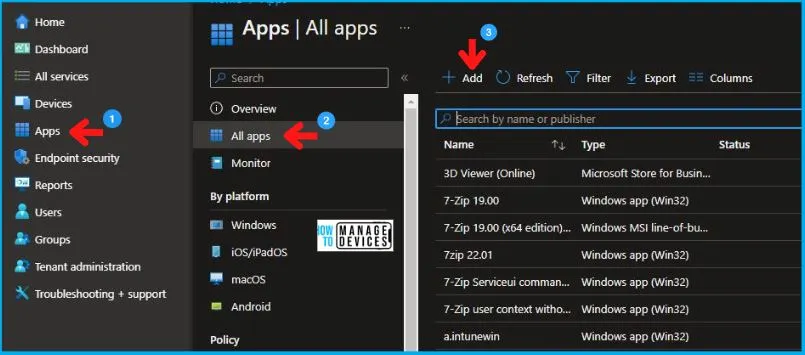
In the Select app type pane, under the Other app types, select Line-of-business app and click Select.
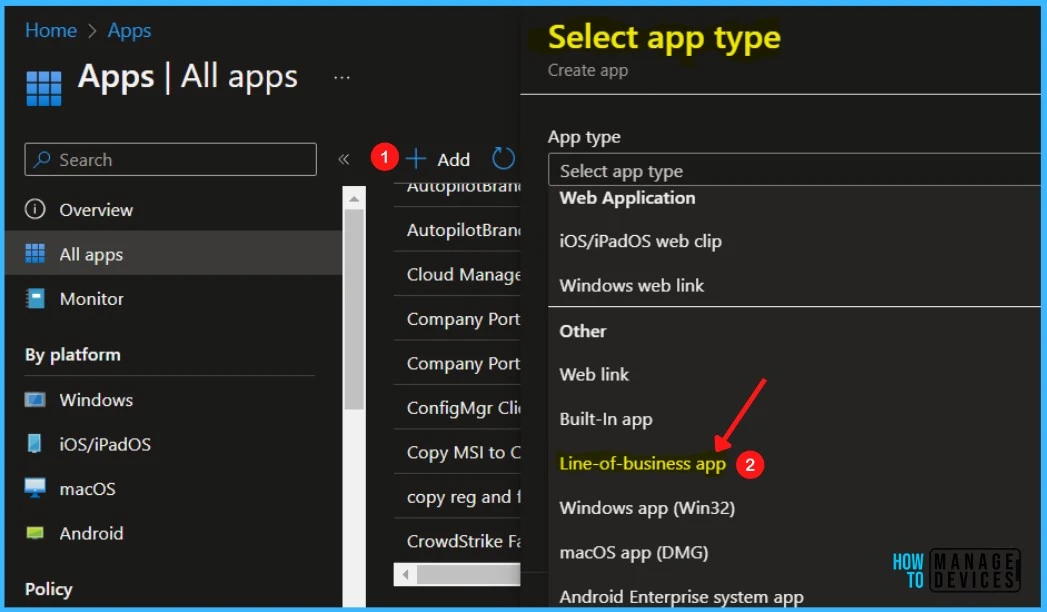
Now in the Add app pane, click Select app package file. Select the browse button. Then, select the downloaded application MSI file. Once you select the app file, The app details appear with Name, Platform, Size, and context. When you’re finished, select OK on the App package file pane.

Enter the App’s Name (For Example, Bluebeam Revu) and the app’s description. Enter the Publisher name – Bluebeam and Command-line arguments – Optionally, enter any command-line arguments you want to apply to the .msi file when it runs.
Also, refer to the below table for better understanding settings that we implemented during this phase of the Bluebeam Assignment:
| Name | Publisher | App Install Context | Ignore App Version |
|---|---|---|---|
| Bluebeam Revu | Bluebeam | Device | No |
- App install context – Select App install context as Device. This specifies the install context to be associated with this app. For dual-mode apps, select the desired context for this app. For all other apps, this is pre-selected based on the package and cannot be modified.
- Ignore app version – Select Yes for apps automatically updated by the app developer (such as Google Chrome, and Zoom).
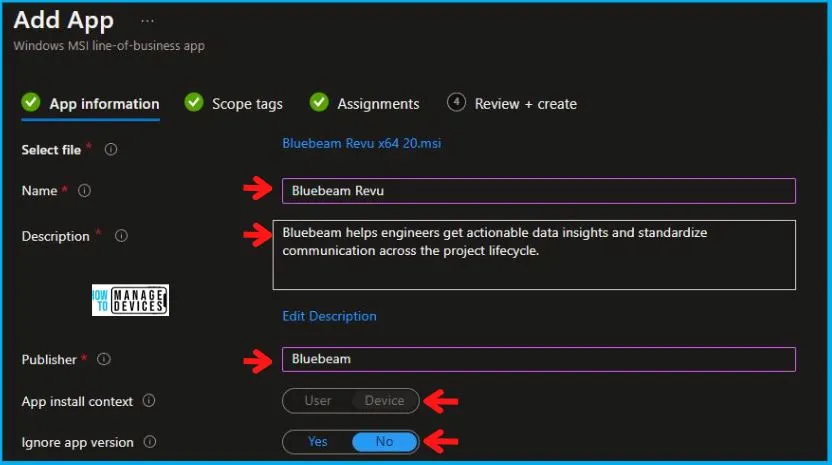
Also, Upload an icon for the app by scrolling down the same page. When users browse the company portal, the app displays this icon. You can provide additional information about the application in this section and click Next.
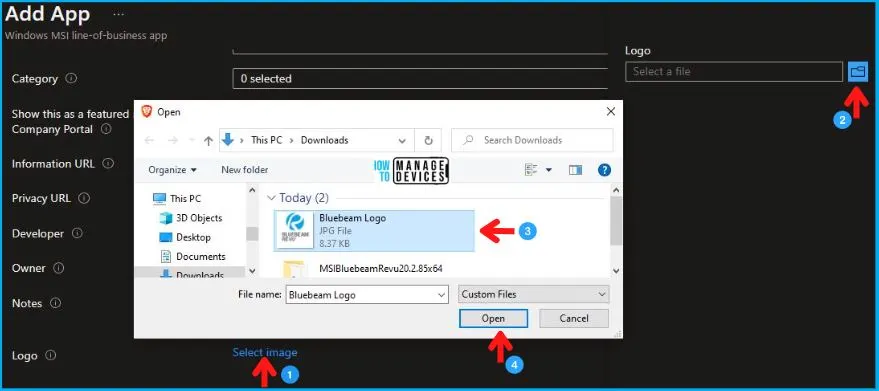
Scope tags are filtering options provided in Intune to ease the admin jobs. In the scope tag section, you will get an option to configure scope tags for the application. Click on Next.
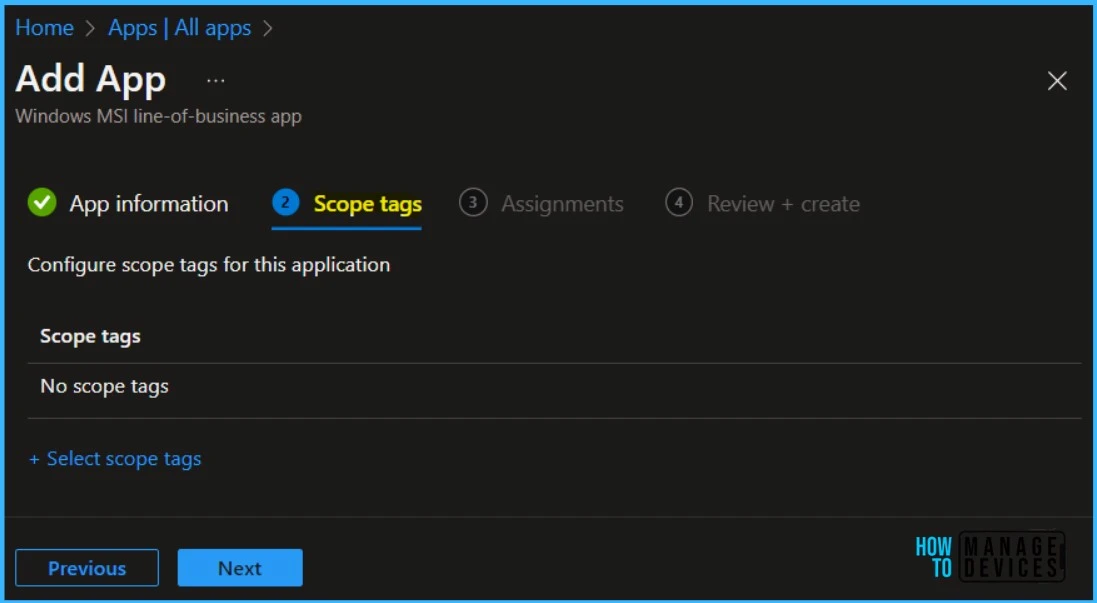
Under Assignments, In Included groups, click Add groups and then choose Select groups to include one or more groups to which you want to deploy Bluebeam, Click Next to continue.
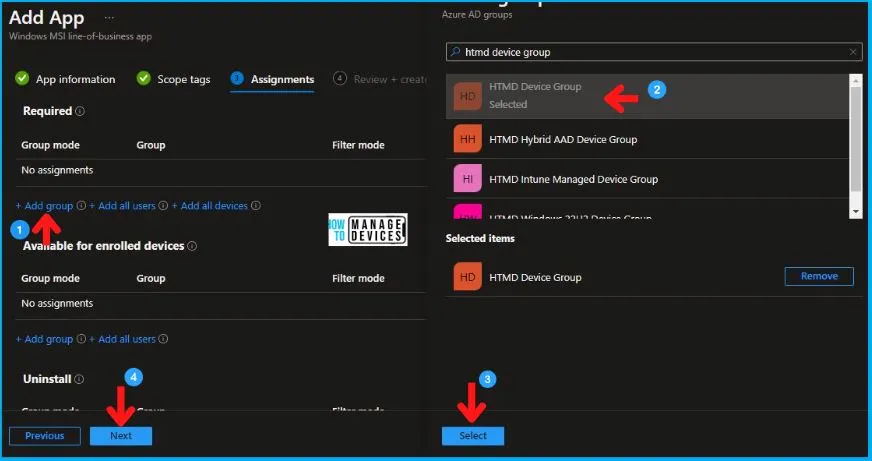
During the application creation process, you will see the details you provided. You can add the app to Intune by reviewing your settings and selecting Create.
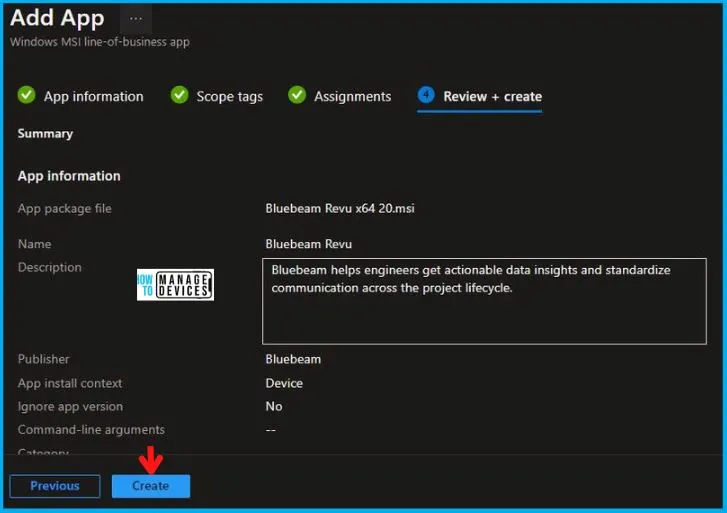
You will see the status Uploading is in progress – When will it be completed? The speed of the internet connection and the size of the application determine how long it takes.
We recommend waiting a while for the upload process to complete, and you can check the progress by clicking on the Notifications icon. You will receive the status “Upload finished” once the package has been uploaded and finished.
Monitor Bluebeam Deployment from Intune Portal
Your groups will receive deployed applications when the devices check in with the Intune service. The policy applies to the devices.
Now, when you log into the machine on which you deployed Cisco Jabber, open the Company Portal, go to the settings tab, and click on Sync, as shown below, to synchronize it manually.
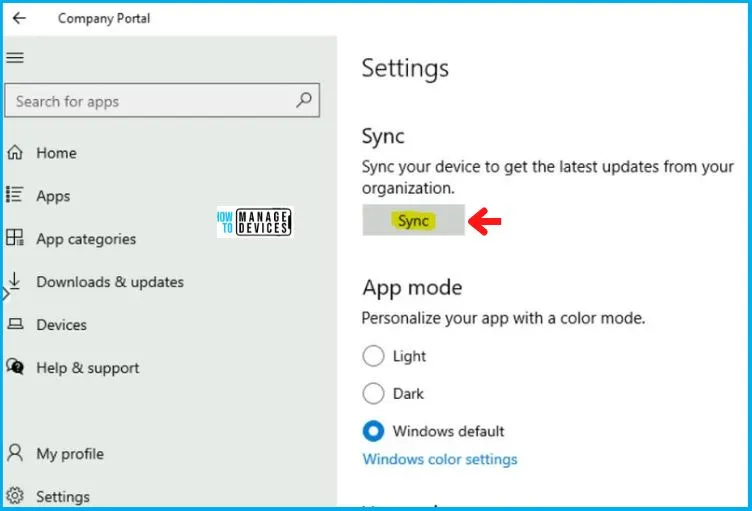
Now, on the client machine, In the Company Portal, You can click on the apps to track the details and check the progress. Here you can see the Bluebeam application is installed successfully.
During the installation of an application, select the application, then select Monitor, where you can check the device and user check-in status. You can view additional details by clicking the Device install status or User install status links.
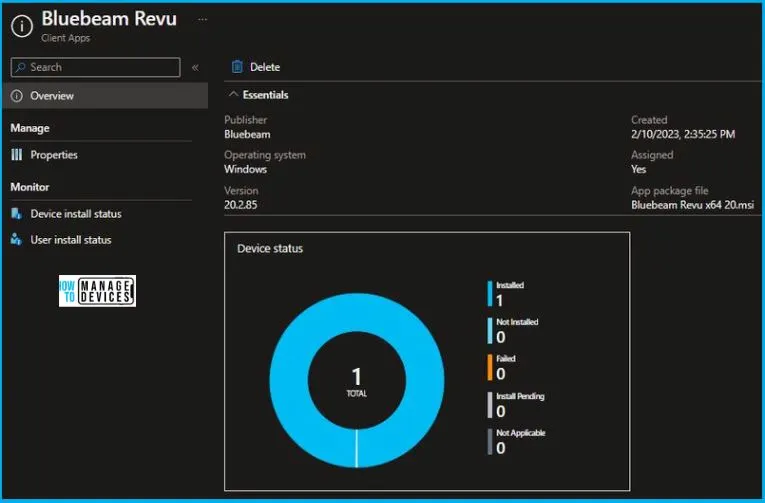
Track Bluebeam Deployment from Windows Registry
All the information can be easily tracked using the registry for tracing deployment issues. LOB app deployment details can be checked from the following registry path HKEY_LOCAL_MACHINE\SOFTWARE\Microsoft\EnterpriseDesktopAppManagement.
There will be two sub-keys corresponding to the
- system SID (all zeros) [will list all device context MSI deployments]
- user SID [will list all user context MSI deployments]
Under System or user subkeys, you will find the MSI app deployments from Intune listed using the MSI Product ID of the package. You can check the detailed post on troubleshooting Intune app deployment issues using the Windows 10 or 11 registry and events.
Author
Abhinav Rana is working as an SCCM Admin. He loves to help the community by sharing his knowledge. He is a B.Tech graduate in Information Technology.

Hi,
I cannot find these LOB Apps on my Company Portal?
Nice write-up! Any tips on getting the uninstall script to work (Get rid of previous BlueBeam Versions)
Any update on how to uninstall old previous Bluebeam versions?